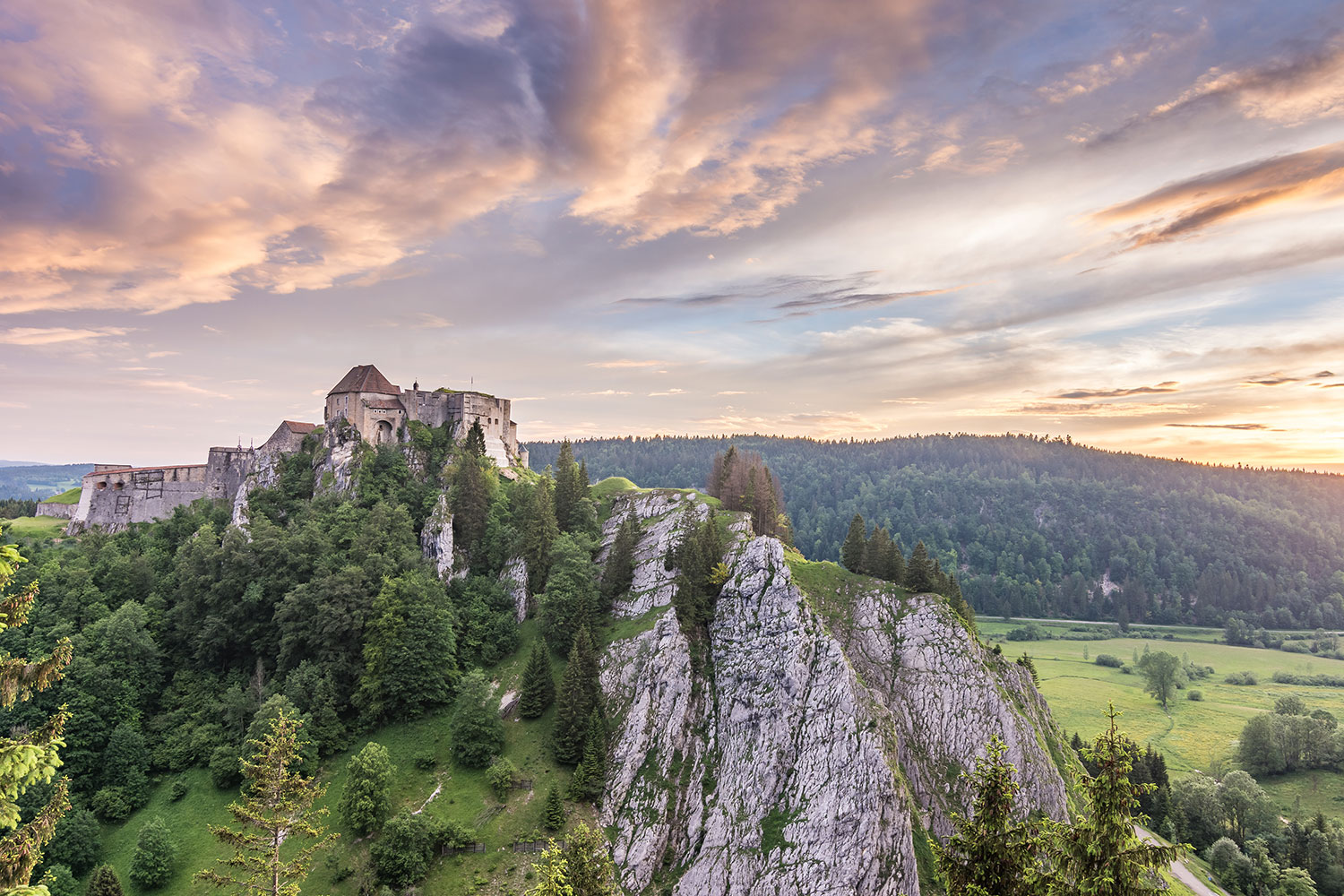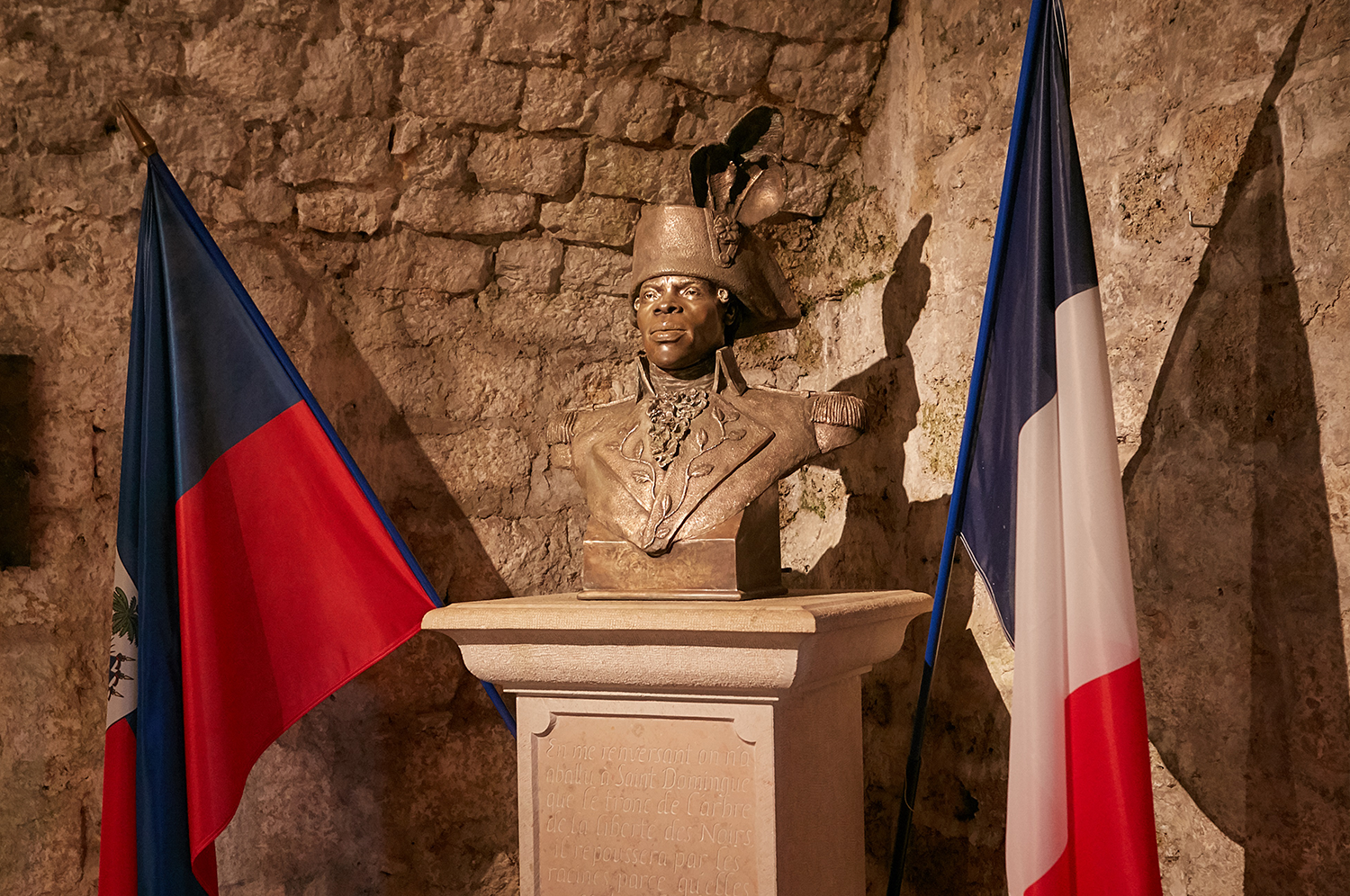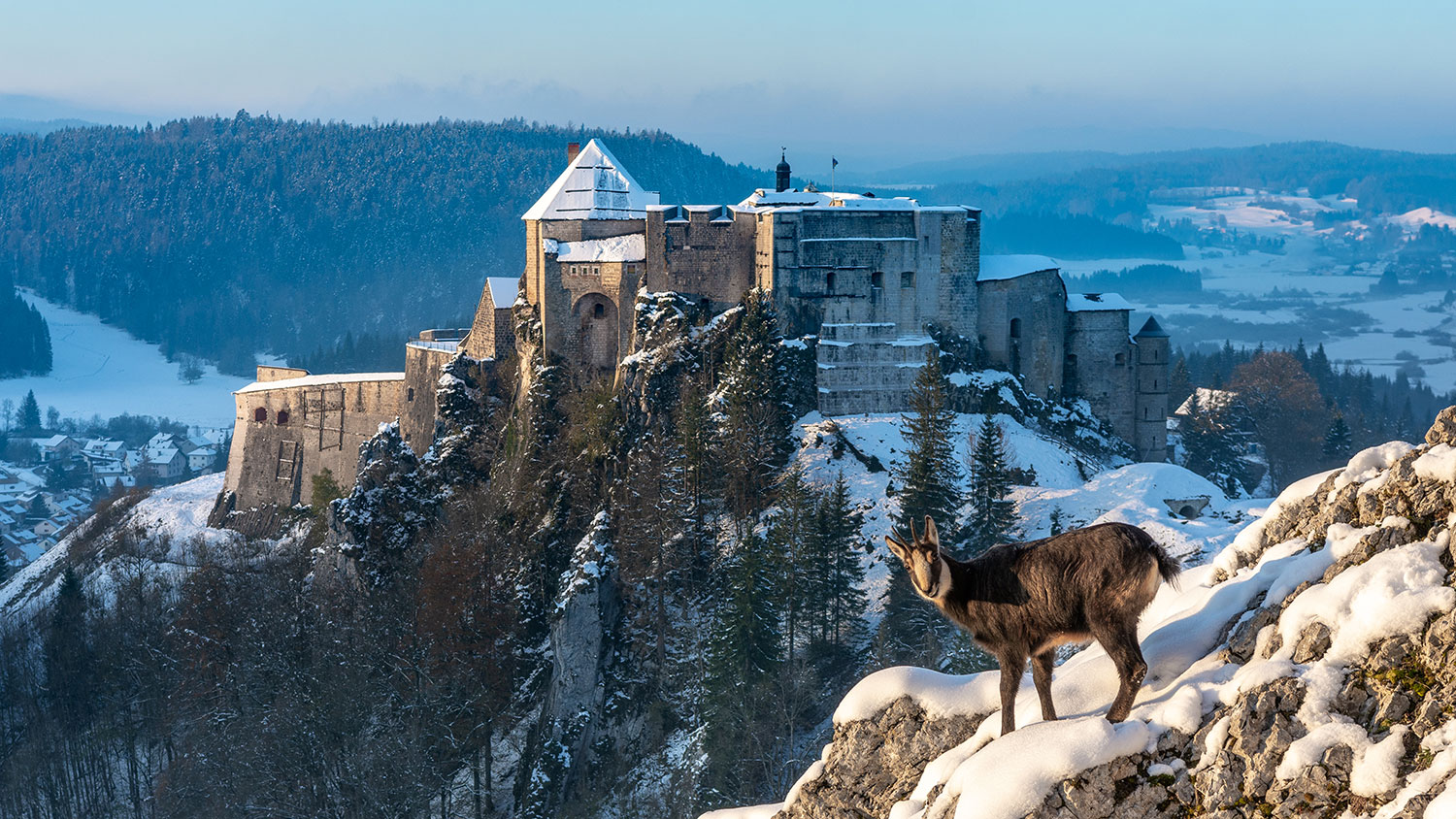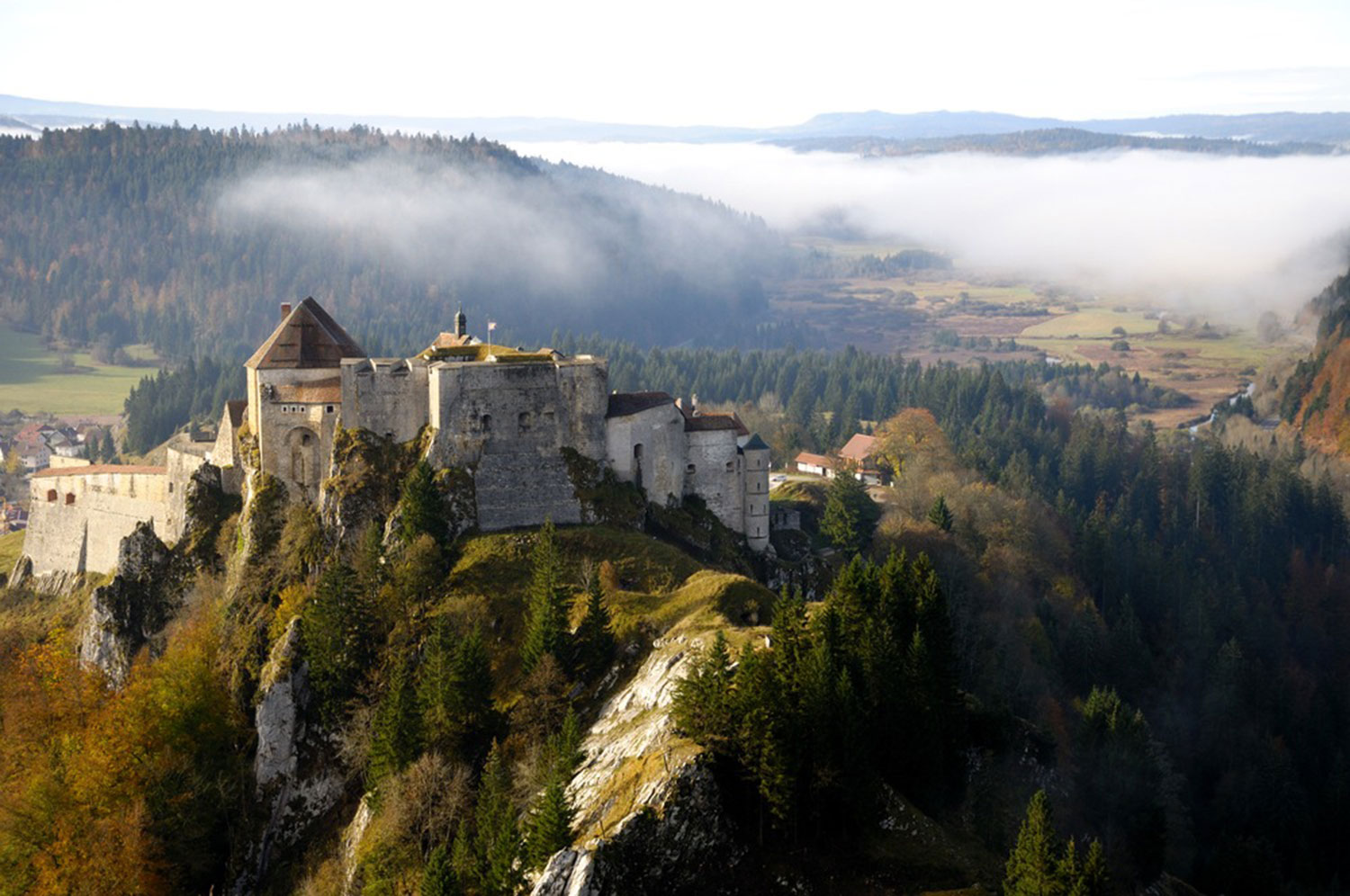Château de Joux is open daily
from 1st April to 15 th November 2025.
From July 5 to august 31, opening from 10:00 AM to 6:00 PM
Last entry to the site at 5/15 PM
From July 5 to august 31, opening from 10:00 AM to 6:00 PM
Last entry to the site at 5/15 PM

A major site steeped in history and military architecture, the chateau de Joux is an emblematic monument of the Franche-Comté region. Located 5km outside the town of Pontarlier and 15km from the Swiss border, the chateau looks down from a hundred metres above the Cluse pass, a narrow mountain pass that cuts through the Jura mountain range. This military and trade route connects roads from Champagne, Flanders and the Haute-Saône areas to Italy and Switzerland.

The chateau de Joux, beyond being a celebration of history and military architecture, is an emblematic memorial:

The rich natural history surrounding the chateau de Joux is both recognised and protected. A level 1 area of Special Scientific Interest (ZNIEFF I) includes the Gérot plateau and the promontory on which the chateau sits. A special conservation zone (ZSC), which is part of the European Natura 2000 network protects the site and the surrounding hills, hillsides and cliffs. And finally a biotope protective decree by the local prefecture (APB) provides further protection for the cliffs to the north of the chateau under the title “Limestone corniches of the Doubs county”.

The chateau de Joux is an exceptional and unique monument, witness to 1,000 years of the history of fortification and an important memorial to the liberation of the people.
Aware of its qualities, the Grand Pontarlier District Council who owns and manages the site, has launched a programme to showcase the scientific, tourist and cultural value of this unusual historic monument. The programme will last 10 years, from 2020 to 2030 and will focus on two historical themes: the evolution of the fortress and the struggle for freedom. These themes will be integrated into the development of the site, the cultural and events programme, and the scientific policy.
[mc4wp_form id=”793″]